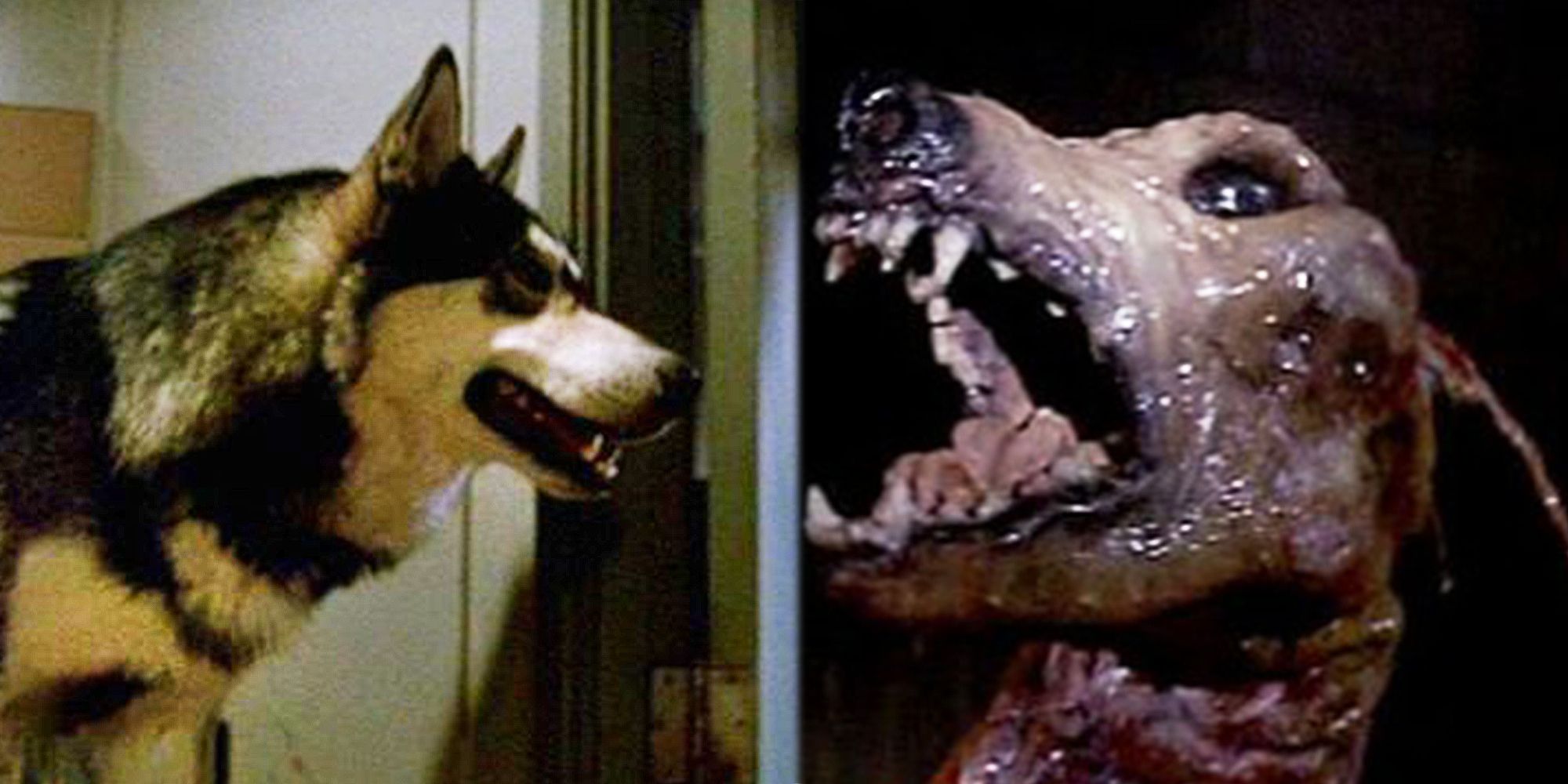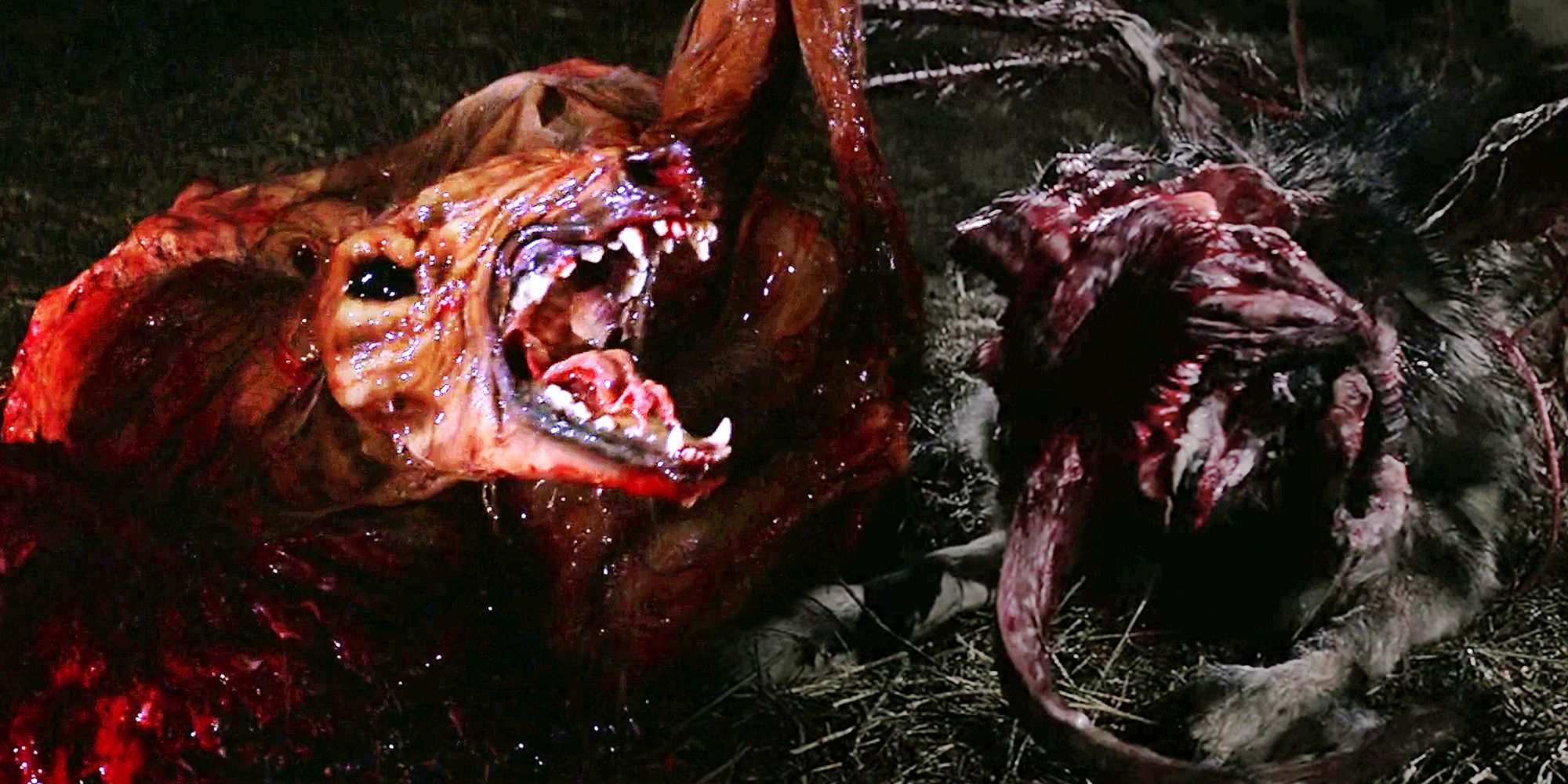The iconic Dog-Thing creature from John Carpenter's The Thing is a gruesome bag of flesh, blood, and tentacles, but it was crafted rather easily. In 1982, John Carpenter created one of the best sci-fi horror movies ever made: an adaptation of John W. Campbell Jr.'s 1938 novella Who Goes There?, which had previously spawned the 1951 film The Thing from Another World. The Thing's blood-curling pacing, heightened suspense, and masterful special effects remain a landmark in the history of horror films, so much so that they still overshadow the 2011 The Thing remake/prequel.
A big part of what makes the Dog-Thing such a memorable creature is the suspense that precedes its appearance. The Norwegian dog at the beginning of the movie is the symbol of looming danger that tells R.J. MacReady (Kurt Russell) and his fellow scientists that something has gone wrong over at the Norwegian base, but it's also the creature that secretly infiltrates the American camp. Once inside, the dog starts transforming, which causes the other dogs to desperately try to escape. After going through a spider-like phase, it's revealed that the dog has fully transformed into a slimy blob with the skinless head of a dog, but with squid-like tentacles and bulging limbs growing out of its amorphous body. The Dog-Thing, also known as Kennel-Thing, is definitely one of the most impressive creatures designs in The Thing, but also one of the easiest to materialize.
The Thing's all-practical special effects were crafted by Robert Bottin, who also decided on the final design of the monsters alongside John Carpenter. Complex sequences like the famous "defibrillator scene" required extremely intricate animatronics, coupled with remote-controlled blood-spurting mechanisms and layers of tissue that could only get broken once per take. Bottin worked so hard for these sequences that he had to be hospitalized. So, instead of creating the Dog-Thing with the same degree of complexity as the Spider-Head, John Carpenter sought the help of the legendary SFX artist Stan Winston.
The first stage of the Dog-Thing didn't evolve onscreen, so it only needed animatronics for its legs and some parts of its body. For its second form, Winston took an even more practical approach to the design and based the creature on the anatomy of the puppeteer. He designed the monster as a hand puppet, with the dog's head and neck extending along the handler's arm. The irregular body of the creature would conceal Lance Anderson, the puppeteer, down to his head and upper torso, and the dog's limp paw would be positioned in a way that could be controlled by Anderson's other hand. Of course, the ever-evolving Thing still had extra moving parts such as its facial expressions and its eyes, but these could be controlled by other members of the crew behind the camera, splitting the workload to make the scene as realistic and comfortable as possible.
This didn't mean the puppeteer was having a great time under the creature, as the Dog-Thing would slither on the ground, grow limbs, spout liquid, and flail its tentacles while getting riddled with bullets. As a result, Lance Anderson needed a leather helmet to protect him from the impacts of the exploding squibs (which still didn't prevent the Thing's slime to drip all over his body). He also needed to pull the tentacles into the creature, which would look appropriate once the footage was put in reverse for the final product. The effects required a lot of coordination, but all of it was worth it, considering how much time was saved building the hand puppet. In comparison to the more contrived designs in John Carpenter's classic, Winston's creation was a quick contribution.
This practical approach to special effects led The Thing to become a timeless horror classic, which has influenced many similar movies ever since. Animatronic gadgets, puppets, and disgusting fluids require much more effort from the filmmakers, but they still hold up four decades later. Movies like The Descent, The Void, It and the Cloverfield franchise owe their effective scares to The Thing's dedication to realism and its chilling suspense, not to mention how John Carpenter's The Thing has also influenced non-horror movies like Quentin Tarantino's The Hateful Eight with its dramatic sense of claustrophobia.


